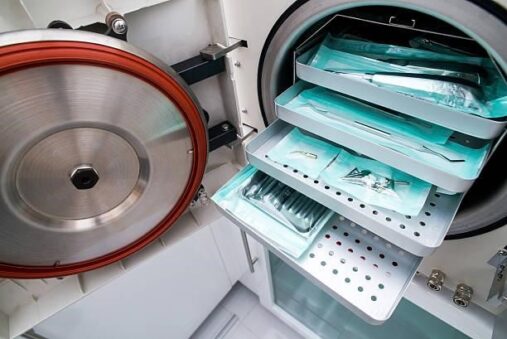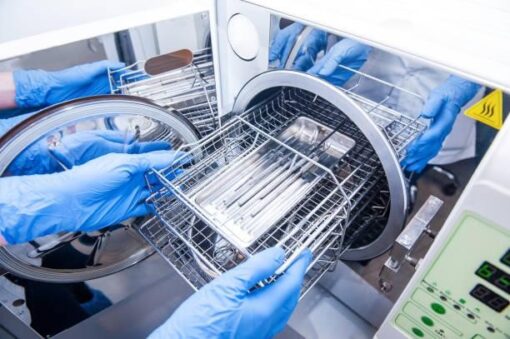- Your cart is empty
- Continue Shopping
Most Common Methods Of Lab Sterilization
- Lab Equipment
- Posted on
-
by John
- 0 comments

Lab sterilization procedures are crucial for working with cell lines obtained in the laboratory. In order to keep your cultures clean and free of pests, you must sterilize them. Without microbiology microscopes, you may not be aware of unwelcome microbial guests in your cultures. To keep your cells healthy, happy, and bug-free, brush up on these several laboratory sterilization methods.
Autoclaving
Sterilization of surgical instruments, laboratory instruments, pharmaceuticals, and other materials is done in an autoclave. Solids, liquids, hollows, and implements of all shapes and sizes can be sterilized by this method. Size, form, and functionality are all factors to consider when purchasing an autoclave. An autoclave, like a pressure cooker, uses steam to destroy bacteria, spores and germs that can’t be killed by boiling water or harsh detergents.
The proteins in the cell wall must be broken down and coagulated in order to kill a cell using heat. An efficient heat transfer agent, steam is a great technique to get rid of microorganisms. The heat of vaporization, on the other hand, makes air a relatively inefficient medium for transferring heat/energy.
Steam’s superior ability to kill microbes is due to this energy. Condensation occurs when steam comes into contact with a colder item. Then, all the energy used to boil the water is transferred into the water. This method is significantly more efficient at heating cells than air at the same temperature. For this reason, steam is employed to sterilize.
Radiation
Bacteria can be killed and dangerous microbes can be neutralized by radiation, which possesses bactericidal capabilities. Therefore, it is a very valuable application for sterilizing material. Radio sterilization, or sterilization with ionizing radiation, is an effective method for killing pathogenic bacteria and has a wide range of applications. Sterilization with heat and chemical compounds is less effective and less flexible than steam sterilization.
Ionizing and non-ionizing radiation are the two main forms of radiation utilized for sterilization. Ionizing radiation is the use of high-intensity, short-wavelength radiation to kill bacteria. Gamma or X-ray radiation reacts with DNA, creating a harmed cell as a result of this reaction. Radiation that does not cause ionization has a longer wavelength and lower energy than ionizing radiation. This means that non-ionizing radiation can no longer permeate substances and is only useful for sterilizing surfaces since it has lost its penetration capability. Industries use ultraviolet light in a variety of ways, making it the most common non-ionizing radiation.
Gas Sterilization

As long as the medical item is wrapped in high-quality paper and polyethylene, the gaseous approach can be utilized to sterilize it.
Sterilization using ethylene oxide may be the only procedure that sterilizes medical devices successfully while causing no damage to the devices themselves. There are a number of medical devices that can be sterilized using ethylene oxide. These include medical devices that are made of certain polymers (like plastic or resin), metals (like stainless steel), or glass, and those that are difficult to access (like catheters).
Small-chamber countertop and self-contained sterilization cabinets are the most prevalent applications of gas sterilization. A gas or a small cartridge or ampule of Ethylene Oxide is opened and allowed to evaporate for each batch processed in these small-batch sterilizers. Ethylene oxide, on the other hand, is very flammable and poisonous. Preparation and attention to detail are essential for the safe use of ethylene oxide sterilizers.
Chemical Sterilization
Many sophisticated medical and laboratory instruments and gadgets, like a bespoke tray, are heat-sensitive these days. In other words, they contain parts that should not be subjected to high temperatures. Rubber, plastic, glass, and other similar materials make up these components.
Chemical sterilization is the preferred alternative to heat sterilization for this purpose. There are a variety of methods for sterilization, but the most common is chemical sterilization.
The following elements and compounds are used in chemical sterilization:
- Silver
- Phosphoric Acid
- Hydrogen Peroxide
- Phthalaldehyde
- Aldehydes and Glutarals Bleach
- Ozone
There are a variety of ways and processes in which the compounds listed above are employed. Some of these substances can be combined with others while others are applied immediately. It is possible to employ some of these methods in conjunction with steam sterilization.
Sterilization of medical and laboratory equipment by chemical means does not necessitate the use of heated tools. Sterilization in this manner isn’t suitable for all devices and equipment. That’s because certain devices and equipment contain components that can react severely with the chemicals mentioned above. It is suggested that you consult the manufacturer’s instructions before utilizing a chemical sterilization technique with these types of equipment. This is true for both the chemical as well as the device makers.
Dry Heat Sterilization

Anything containing fats, oils, powders, or materials that are more likely to rust benefits most from dry heat sterilization. As the name implies, dry heat sterilization differs from autoclaving as neither steam or water is involved. Biosafety cabinets can be sterilized using dry heat in some labs.
Normal air pressure is maintained at 325 degrees Fahrenheit or greater during the process of dry heat sterilization. Even outside of laboratories, dry heat sterilization is used routinely . Dry heat sterilization is the method used to kill germs and other microorganisms when food is cooked in the oven.
To properly sterilize an item using dry heat, higher levels of heat are required.
Filtration
In order to sterilize a solution without heating, filtering is a terrific method to go about it. It’s no secret that filters work by passing the fluid through an impregnated filter with a pore width so small that bacteria cannot pass through.
Membrane filters based on cellulose esters or sintered glass funnels are the most prevalent type of filters these days. Filters having an average pore diameter of 0.2 um are commonly used to remove microorganisms.
In the event that viruses or phages are a worry, however, keep in mind that these filters can let them pass.
Conclusion
There are a variety of methods for sterilizing surfaces, however a more efficient sterilization procedure is usually developed by combining several of these methods. Even though sterilization itself does not require downstream validation for usage in a manufacturing setting, it is highly advised that these processes be continuously monitored and measured in order to assure safe, predictable results that promote both patient and crew safety.
References:
https://www.sepsservices.com/5-common-methods-of-lab-sterilization/
https://www.laboratory-equipment.com/blog/best-sterilization-method-lab/
https://bitesizebio.com/853/5-laboratory-sterilisation-methods/
